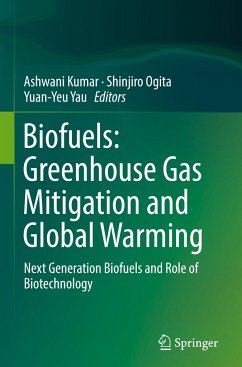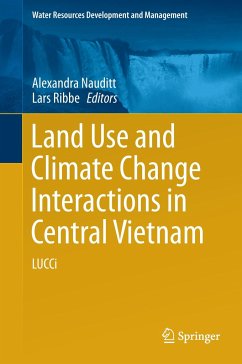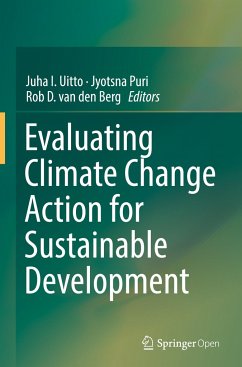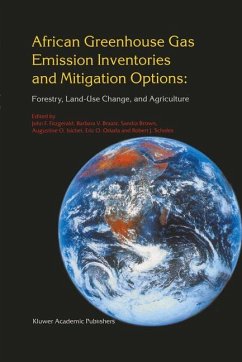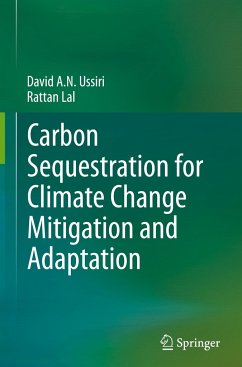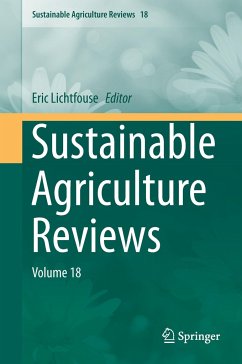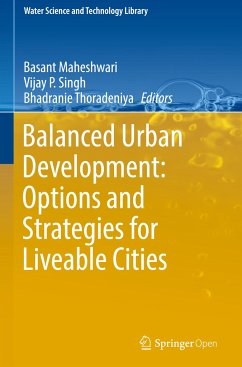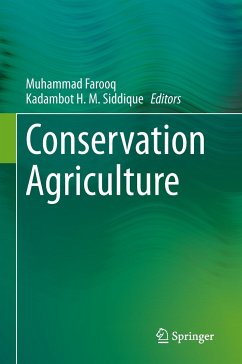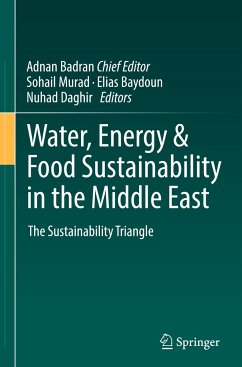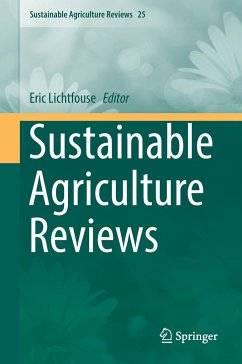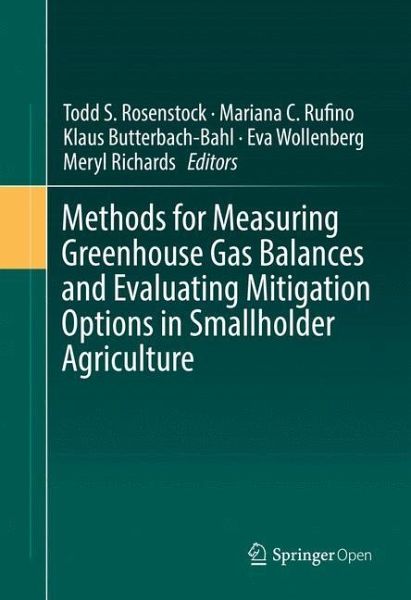
Methods for Measuring Greenhouse Gas Balances and Evaluating Mitigation Options in Smallholder Agriculture
Versandkostenfrei!
Versandfertig in 6-10 Tagen
38,99 €
inkl. MwSt.

PAYBACK Punkte
19 °P sammeln!
This book provides standards and guidelines forquantifying greenhouse gas emissions and removals in smallholder agricultural systemsand comparing options for climate change mitigation based on emissionreductions and livelihood trade-offs. Globally, agriculture is directlyresponsible for about 11% of annual greenhouse gas (GHG) emissions and inducesan additional 17% through land use change, mostly in developing countries.Farms in the developing countries of sub-Saharan Africa and Asia arepredominately managed by smallholders, with 80% of land holdings smaller thanten hectares. However, little t...
This book provides standards and guidelines forquantifying greenhouse gas emissions and removals in smallholder agricultural systemsand comparing options for climate change mitigation based on emissionreductions and livelihood trade-offs. Globally, agriculture is directlyresponsible for about 11% of annual greenhouse gas (GHG) emissions and inducesan additional 17% through land use change, mostly in developing countries.Farms in the developing countries of sub-Saharan Africa and Asia arepredominately managed by smallholders, with 80% of land holdings smaller thanten hectares. However, little to no information exists on greenhouse gasemissions and mitigation potentials in smallholder agriculture. Greenhouse gas measurements in agricultureare expensive, time consuming, and error prone, challenges only exacerbatedby the heterogeneity of smallholder systems and landscapes. Concerns overmethodological rigor, measurement costs, and the diversity of approaches,coupled with the demand for robust information suggest it is germane for thescientific community to establish standards of measurements for quantifying GHGemissions from smallholder agriculture. Standard guidelines for use byscientists, development organizations will help generate reliable data onemissions baselines and allow rigorous comparisons of mitigation options. Theguidelines described in this book, developed by the CGIAR Research Program onClimate Change, Agriculture, and Food Security (CCAFS) and partners, areintended to inform anyone conducting field measurements of agriculturalgreenhouse gas sources and sinks, especially to develop IPCC Tier 2 emissionfactors or to compare mitigation options in smallholder systems.





